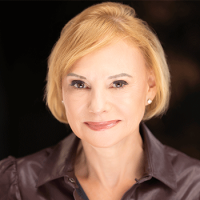Arctic Research Infrastructure and Capabilities in North America
Across the North American Arctic, support for scientific research has not met demand. At a recent Polar Institute event, high-level research directors described the state of Arctic research infrastructure in Greenland, Alaska and Canada, as well as the innovative ways researchers are bridging existing gaps.
“We do not have the infrastructure in place that we need,” said Nettie La-Belle Hamer, University of Alaska Fairbanks Interim Vice Chancellor for Research. As climate change increasingly threatens national security, Arctic climate research is a critically important component to understanding the global climate system. Yet the map on Hamer’s slide showed less than 25 dots indicating research infrastructure in the vast state of Alaska.
Much of northern Alaska, Canada and Greenland are not connected by road or power sources, making Arctic research more expensive and inefficient. Panelists said permanent, year-round facilities could allow for better execution of Arctic research goals. Martin Fortier of Sentinel North highlighted Canada’s state-of-the-art, new Arctic research facility, the Canadian High Arctic Research Station. Additionally, Hamer was part of the team that proposed the U.S. High Arctic Research Center – a permanent, year-round station that has yet to gain traction on a national level. (Insert map.)
Networking to reduce costs
Over 4,000 miles away in Greenland, Josephine Nymand, Chair of the Greenland Research Council, said, “We have a lot of research facilities and we have access to research places, but we just do not have the resources to do the work that we would like to do.” Therefore, the Government of Greenland created the ISAAFFIK website to encourage collaboration and cost-sharing between professional collaborators, as well as provide an overview of Arctic research infrastructure.
In the absence of sufficient infrastructure and support, research networks have popped up across the North American Arctic. The Canadian Network of Northern Research Operators, for example, advances the collective interests of Canada’s northern research infrastructure operators through coordination, outreach and joint action. The Arctic Science Ministerial has twice convened science ministers from 24 countries on collective efforts to step up international scientific cooperation in the Arctic, and a 3rd meeting is planned in 2021.
Bettina Ovgaard of the Danish Joint Arctic Command said “the Arctic is getting very hot in all kinds of manners.” In addition to rising temperatures and international collaboration, military interests have increased across the region. More visits from military vessels “basically means that there will be more platforms to do research from, in a way, if you can access them.” By sharing icebreakers, tools and technologies with other scientists and military actors alike, researchers are able to cut costs and maintain operations despite insufficient infrastructure.
Arctic communities lack infrastructure, too
The Arctic’s lack of wage labor and infrastructure maintains “crisis-level socioeconomic conditions” in Indigenous communities. Upon conclusion of the Inuit Circumpolar Council Economic Summit, attention was drawn especially to the “most remote communities, where access to decent housing, potable water and sewer services, health services, information technology and other basic services and infrastructure are not present.”
“Every time I see a dot on all these maps that everybody put up,” said Nagruk Harcharek, General Manager for science at Ukpeagvik Inupiat Corporation (UIC), “I see it as an opportunity to further provide economic opportunities to local people.” Under Harcharek’s direction, UIC Science hires near field sites, staffs its year-round stations with local and primarily Indigenous people, and creates as many local research jobs as possible, “providing opportunities that might not otherwise be there if there wasn’t research going on.”
Therefore, supporting infrastructure for Arctic research might not only advance U.S. national security measures, but improve civil security in the North American Arctic. Said Hamer, “I think that that part of the conversation – bringing in the local and Indigenous people – is as important to the conversation as the building of the infrastructure.”
Arctic Infrastructure Inventory
“Let’s look out decades. How is the North American Arctic going to change and what is the science community going to need in 10, 20, 30 years? Because we know what an investment in Arctic research infrastructure is.” Nettie La-Belle Hamer
Arctic research infrastructure is a critical need that will only become more important as the impacts of climate change unfold in the 2020s. At the Wilson Center Polar Institute, we recently launched the Arctic Infrastructure Inventory – a critical, public resource for advancing informed policy decisions, investment and infrastructure development, and research in the Arctic region. The Inventory will evolve into a larger Arctic economic development program in consultation with pertinent actors, such as the Arctic Economic Council.
With about 8,000 Arctic infrastructure projects online, only one entry is primarily an investment in research. Please help us improve public understanding of Arctic research infrastructure investments by submitting a project.
Moderators

Author, Threat Multiplier: Climate, Military Leadership & the Fight for Global Security.

Panelists




Hosted By

Polar Institute
Since its inception in 2017, the Polar Institute has become a premier forum for discussion and policy analysis of Arctic and Antarctic issues, and is known in Washington, DC and elsewhere as the Arctic Public Square. The Institute holistically studies the central policy issues facing these regions—with an emphasis on Arctic governance, climate change, economic development, scientific research, security, and Indigenous communities—and communicates trusted analysis to policymakers and other stakeholders. Read more
